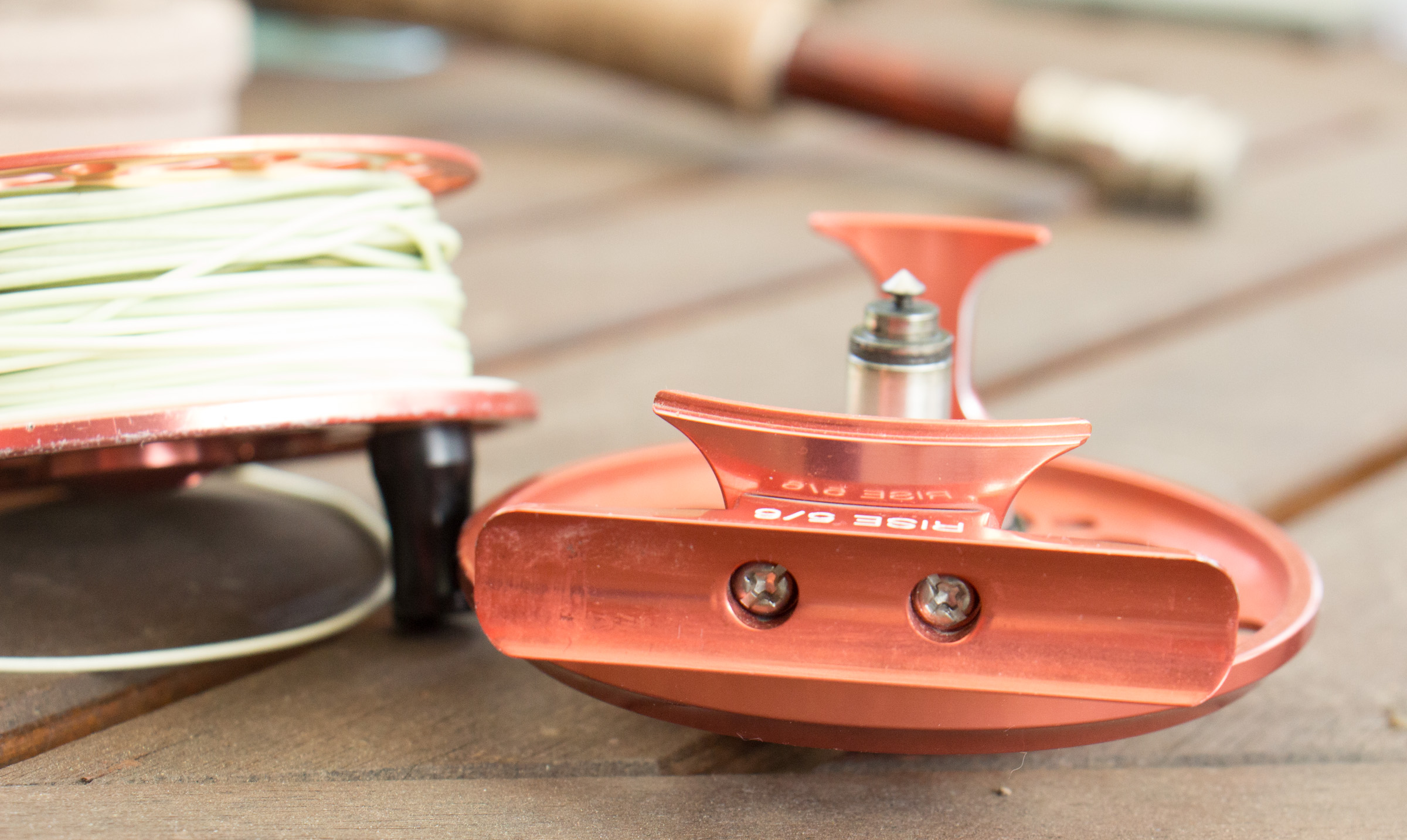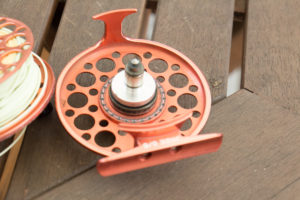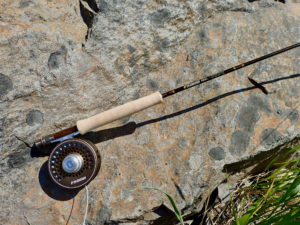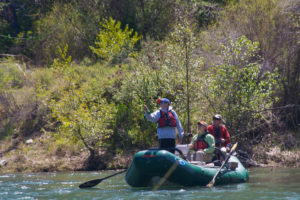Here in Washington, not only are we under a stay-at-home order but even if we venture out, we can’t fish. All state lands are closed, and the Washington Department of Fish and Wildlife has closed ALL hunting and fishing seasons until further notice.
 So anglers have plenty of time on their hands this spring. Fly tiers are reloading fly boxes and rod builders are turning out new sticks, but eventually, every angler will find themselves at a loss as to what to do next. One thing every fly fisher should do is clean and repair their gear for the coming season, whenever it opens.
So anglers have plenty of time on their hands this spring. Fly tiers are reloading fly boxes and rod builders are turning out new sticks, but eventually, every angler will find themselves at a loss as to what to do next. One thing every fly fisher should do is clean and repair their gear for the coming season, whenever it opens.
The first place to focus on is the often-overlooked need to perform some maintenance on your rods, reels, and lines.
Fly rods are slender wands boasting both strength and fragility. They should be checked carefully before – and during – the core fishing season to keep them in peak performance.
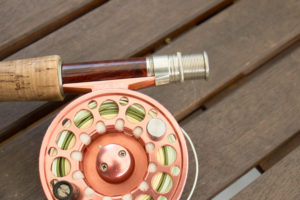 Reels control your fly lines, keep them secure and ready for use, and control the line as you work to retrieve hooked fish. Fly lines, meanwhile, provide both the method of reaching out to fish and the means of drawing them in. Without lines, there are no fish. Yet anglers seldom consider the condition of the lines as all.
Reels control your fly lines, keep them secure and ready for use, and control the line as you work to retrieve hooked fish. Fly lines, meanwhile, provide both the method of reaching out to fish and the means of drawing them in. Without lines, there are no fish. Yet anglers seldom consider the condition of the lines as all.
With this in mind, I looked at some of my own gear and contacted some experts (fly shop staff, guides, and gear makers) to get advice on what should be done to get these core fly fishing essentials ready for a new season. Here’s what we came up with:
Clean Your Rods
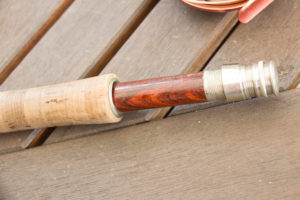 Start at the butt of the rod and work upward. Use a soft brush to clean any grit and dirt from the reel seat, while checking for any damage to the threads and locking ring of the seat. Make sure there is no dirt compressed into the slots that hold the reel footplate. Excess material inside those slots can prevent the reel from firmly attaching to the rod.
Start at the butt of the rod and work upward. Use a soft brush to clean any grit and dirt from the reel seat, while checking for any damage to the threads and locking ring of the seat. Make sure there is no dirt compressed into the slots that hold the reel footplate. Excess material inside those slots can prevent the reel from firmly attaching to the rod.
Wipe down your cork grip with a damp cloth to remove surface grime. If the cork is scratched or damaged, you can smooth the edges of the damaged areas with a bit of fine-grit sandpaper.
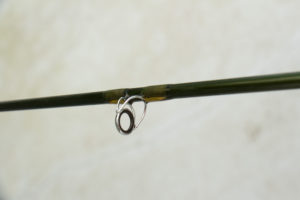 Look closely at the rod guides—a magnifier (or magnified reading glasses) can be helpful. Any nicks or abrasions to these thin, wire hoops can cause damage to your expensive fly lines. During normal casting, a line may reach speeds of 50-60 mph. That creates a lot of friction, and any blemish on the guide can tear away at the line’s outer coatings. If you find a small nick, you can try smoothing it with a bit of 600-grit sandpaper. The better option is to take it to your local fly shop and get their recommendations on a fix. Significant damage could require the guide to be replaced altogether.
Look closely at the rod guides—a magnifier (or magnified reading glasses) can be helpful. Any nicks or abrasions to these thin, wire hoops can cause damage to your expensive fly lines. During normal casting, a line may reach speeds of 50-60 mph. That creates a lot of friction, and any blemish on the guide can tear away at the line’s outer coatings. If you find a small nick, you can try smoothing it with a bit of 600-grit sandpaper. The better option is to take it to your local fly shop and get their recommendations on a fix. Significant damage could require the guide to be replaced altogether.
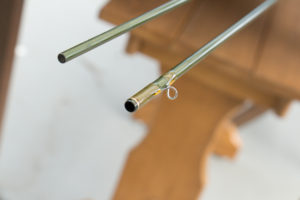 You should also closely check rod ferrules—the ‘joints’ that connect rod sections—to ensure there is no grit or dirt inside the female side or stuck to the male end. Use warm water to flush out the female end of there is anything inside. Blot out the interior with Q-tips and then let air dry. Wipe down the male end and rub a bit of ferrule wax evenly around the entire ferrule. Many new rods ship with a small container of ferrule wax included, but if you don’t have that, use Loon Outdoor’s Graffitolin Ferrule Wax. It’s formulated to help graphite rods fit securely together.
You should also closely check rod ferrules—the ‘joints’ that connect rod sections—to ensure there is no grit or dirt inside the female side or stuck to the male end. Use warm water to flush out the female end of there is anything inside. Blot out the interior with Q-tips and then let air dry. Wipe down the male end and rub a bit of ferrule wax evenly around the entire ferrule. Many new rods ship with a small container of ferrule wax included, but if you don’t have that, use Loon Outdoor’s Graffitolin Ferrule Wax. It’s formulated to help graphite rods fit securely together.
Check Your Lines
Fly lines, though durable and tough, do have a finite lifespan. Floating lines can get nicked, scraped, and just plain worn down through a season or two of casting. Rocks, trees, and tangled backcasts can all result in damage to the line. And the moredamage that the line receives, the less efficiently the line floats. So, what do you need to do in the offseason?
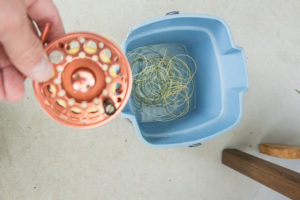
- Remove any old leaders and then strip the line off your reel, into a bucket of clean, warm water. As you strip the line, check every inch of it from its tip to its butt along the way. If you find any cracks, splits, or deep cuts/scratches, replace the line. If the damage penetrates to the line’s inner core, it’s likely the line will break on the first big fish fought in the coming season. And even if the damage is only in the surface coating, it could easily progress to a full failure.
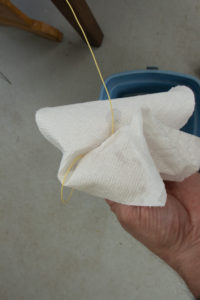
- If there is no damage to the line, swish it in the warm water to break off any dirt/grit. Do NOT use soap. Soaps help clean things, in part, by breaking down the surface tension of water so it can better penetrate the dirty material and ‘lift’ grime away. But floating lines rely on the surface tension of water to float high. Even with the best rinse, some soap residue can linger, making the line less efficient. Pinch the line with a clean, dry cloth as you pull it from the bucket to wipe off the water and lingering dirt.
- Treat your line with a combo line cleaning/dressing product. I’ve found Rio’s AgentX Line Dressing is ideal. Apply a few drops of AgentX to a clean paper
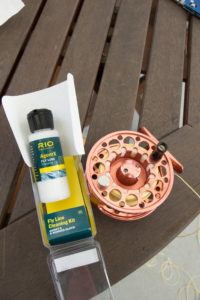 towel — or better yet, one of Rio’s Micro Abrasive Wonder Cloths — and pinch the cloth around your line as you spool the line back onto your reel. Rio offers the AgentX and Wonder Cloths as a kit for $11.
towel — or better yet, one of Rio’s Micro Abrasive Wonder Cloths — and pinch the cloth around your line as you spool the line back onto your reel. Rio offers the AgentX and Wonder Cloths as a kit for $11.
NOTE: Keep your line at top performance during the season but periodically treating with a new line dressing treatment.
Maintain Your Reel
Reels have more moving parts and precision mechanisms than any other fly fishing gear in your kit. They need some routine care to stay in top form.
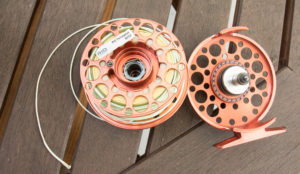 Visually check the reel from all angles. Make sure the ‘foot’ that attaches to the rod’s reel seat is secure. Tighten any loose screws on the foot.
Visually check the reel from all angles. Make sure the ‘foot’ that attaches to the rod’s reel seat is secure. Tighten any loose screws on the foot.- Remove the spool from the reel and check its interior face. Make sure there is no grit in or around the spindle hole on the spool.
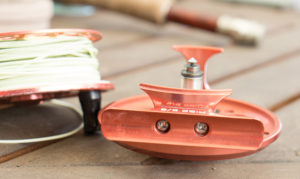 With the spool removed, check the reel’s drag system. Use a soft brush to wipe away any dirt or grit. I find a small camera blower-brush is ideal for this. (something like this)
With the spool removed, check the reel’s drag system. Use a soft brush to wipe away any dirt or grit. I find a small camera blower-brush is ideal for this. (something like this)
NOTE: Modern drag systems can be precisely engineered so be sure to follow manufacturer recommendations when cleaning or disassembling drag systems.
